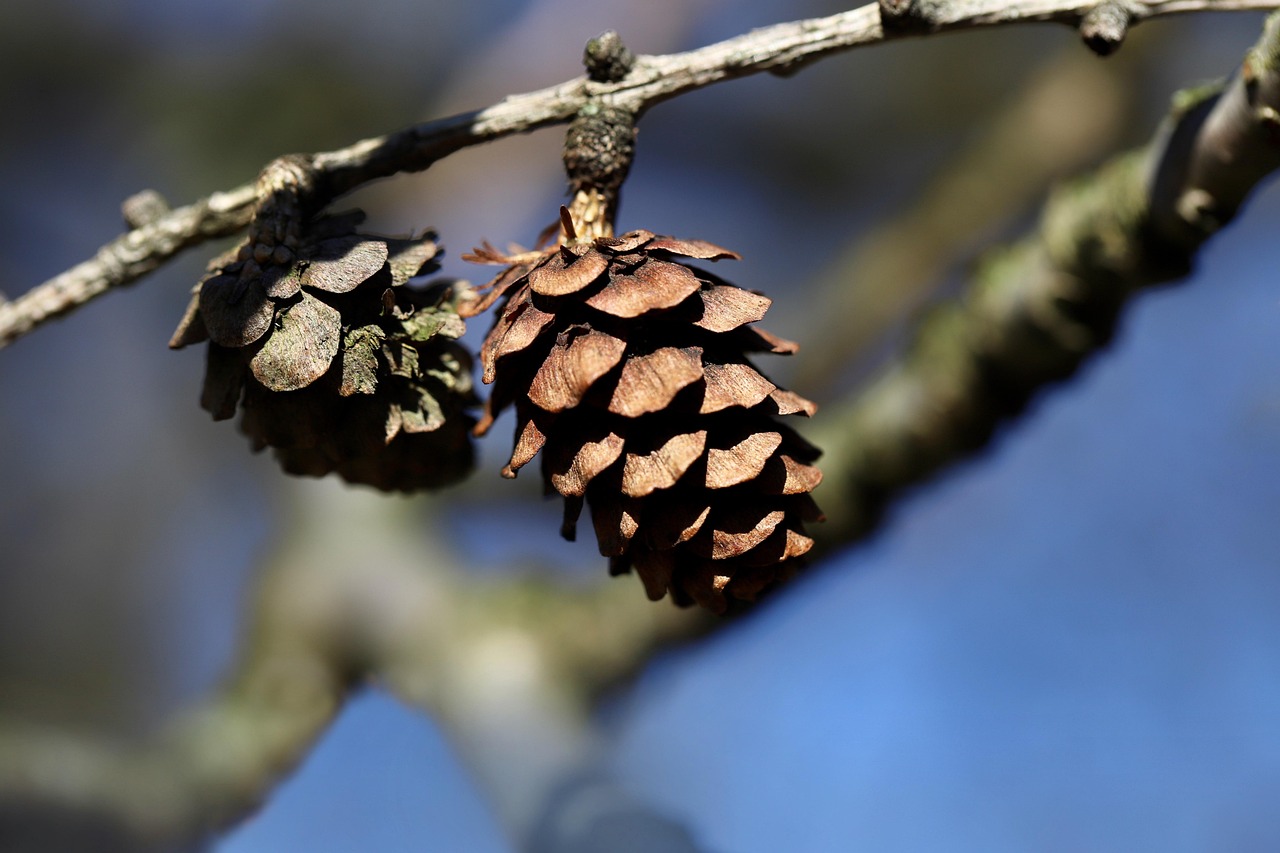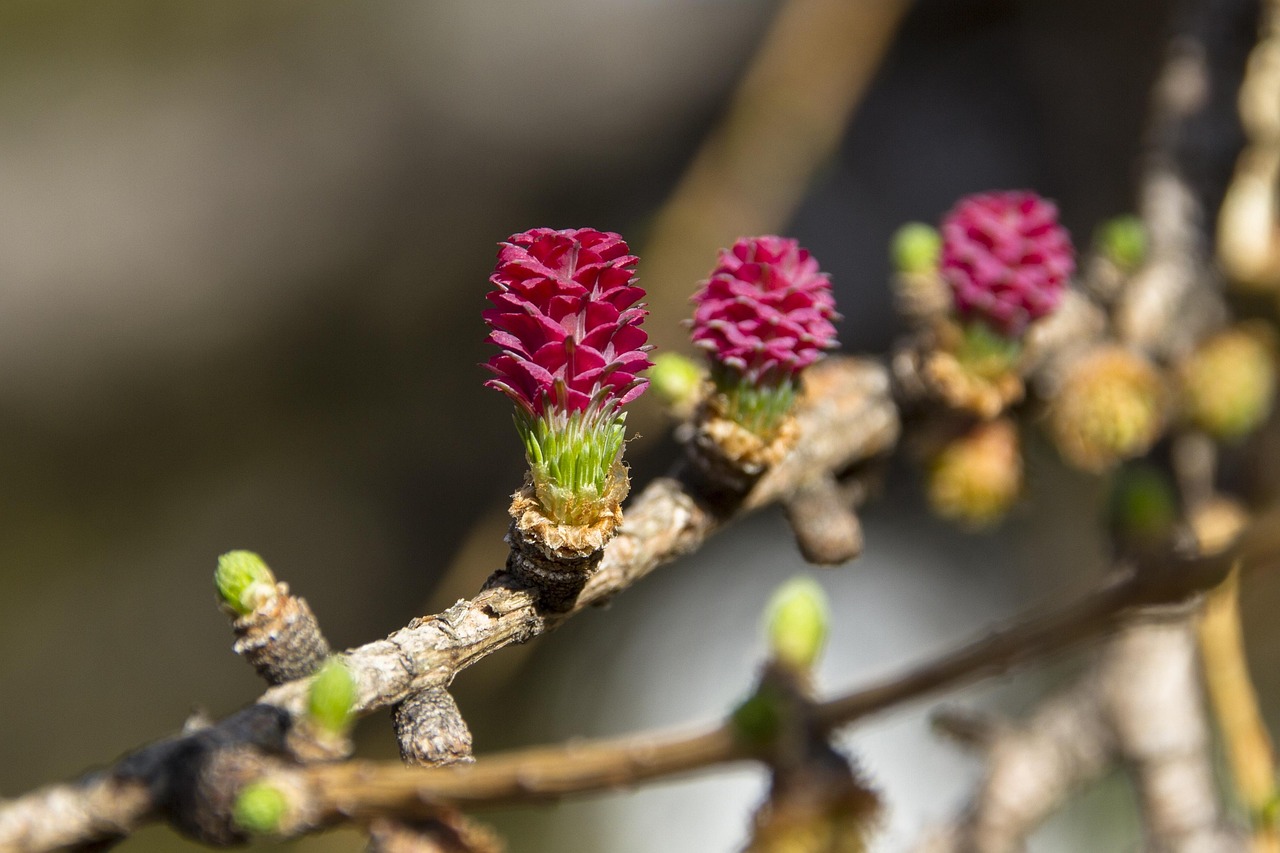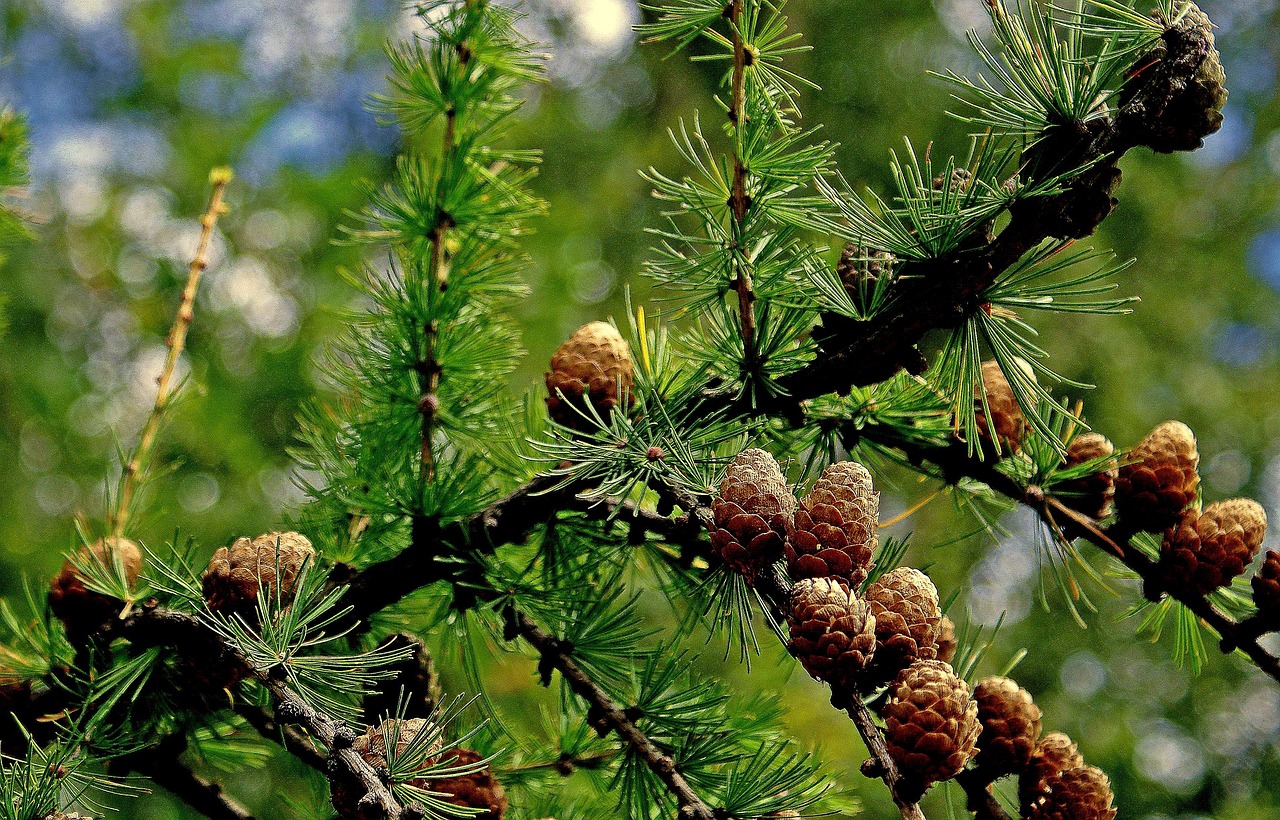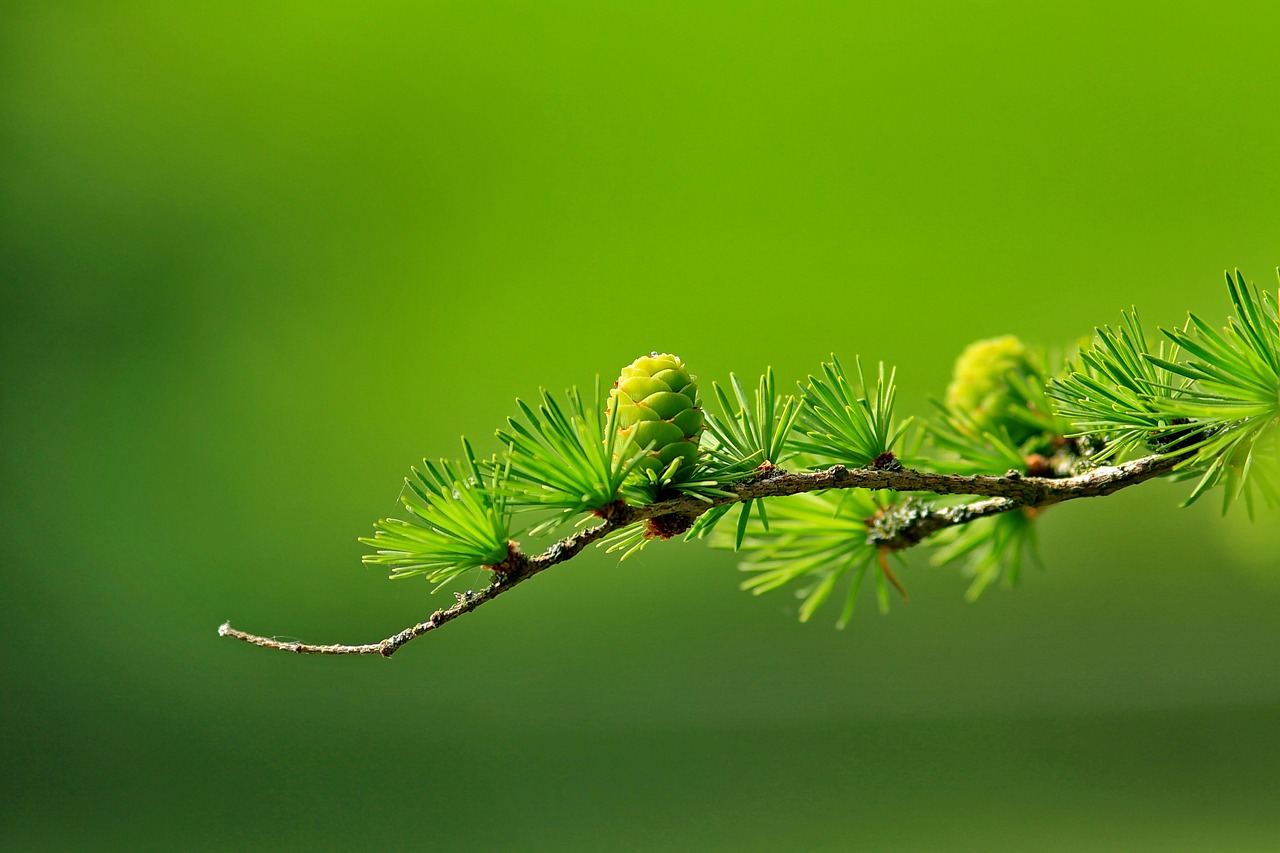Larch trees in northern cold regions exhibit a moderate growth rate, typically ranging from 12 to 24 inches per year, depending on environmental conditions and soil quality. Their ability to thrive in harsh climates makes them a notable species for reforestation and ecological balance.
Understanding Larch Trees
Larch trees, belonging to the genus Larix, are unique among conifers because they are deciduous. This means they shed their needles in the autumn, unlike most conifers that retain their foliage year-round. They are primarily found in the northern hemisphere, particularly in regions characterized by cold temperatures and harsh winters.

Their adaptability to various soil types and climates makes larch trees a vital component of boreal forests. These forests play a crucial role in carbon sequestration and provide habitats for diverse wildlife. Larch trees can grow up to 100 feet tall and live for several decades, with some specimens reaching over 300 years of age.
Growth Rate Influencers
The growth rate of larch trees in northern cold regions is influenced by several factors. Understanding these factors can help in managing their growth effectively and ensuring healthy forests. Key influencers include:
- Soil Quality: Nutrient-rich, well-drained soil promotes faster growth.
- Climate Conditions: Adequate sunlight and moisture levels are crucial for optimal growth.
- Temperature: Larch trees thrive in cooler climates but require warm temperatures during the growing season.
- Pests and Diseases: Infestations can hinder growth and overall tree health.
Growth Patterns of Larch Trees
Larch trees exhibit distinct growth patterns that vary throughout their lifespan. During the early years, these trees tend to grow rapidly as they establish their root systems. As they mature, the growth rate may slow down but can still be significant under favorable conditions.

The following table summarizes typical growth rates observed in different ages of larch trees:
| Age (Years) | Average Growth Rate (Inches per Year) |
|---|---|
| 1-5 | 12-24 |
| 6-15 | 10-18 |
| 16-30 | 8-12 |
| 31+ | 4-8 |
Environmental Adaptations
Larch trees have developed several adaptations that allow them to thrive in cold northern regions. These adaptations include:
- Needle Structure: Their needles are covered with a waxy coating that reduces water loss during winter.
- Root System: A deep root system enables access to moisture during dry periods.
- Seasonal Shedding: Shedding needles in winter helps conserve energy and resources.
These features not only support their growth but also contribute to the overall health of the ecosystem where they are found. By providing shade and shelter, larch trees positively impact other plant species and local wildlife.

In addition to their ecological benefits, larch wood is highly valued for its durability and resistance to decay. This makes it ideal for construction and other wood products, further highlighting the importance of sustainable management of larch forests in cold regions.
Cultural Significance
Larch trees hold cultural significance in many northern communities. Indigenous peoples have used larch wood for various purposes, including building materials and traditional crafts. The trees are also celebrated in local folklore and traditions, symbolizing strength and resilience.
Understanding the growth rates and ecological roles of larch trees is essential for conservation efforts. As climate change continues to impact northern ecosystems, monitoring these trees will be crucial in maintaining biodiversity and forest health.
Growth Conditions for Larch Trees
The growth rate of larch trees in northern cold regions is significantly affected by specific environmental conditions. Understanding these conditions can help in optimizing growth and ensuring the health of larch forests. Key growth conditions include:

- Soil Type: Larch trees prefer well-drained, sandy or loamy soils. Heavy clay soils can lead to poor drainage, adversely affecting root development.
- Moisture Availability: While larch trees can tolerate drought, consistent moisture during the growing season enhances their growth rate.
- Sunlight: Full sunlight exposure is essential for photosynthesis. Larch trees thrive in open areas where they can receive ample light throughout the day.
- Temperature Range: Larch trees typically grow best in temperatures ranging from 60°F to 70°F during the growing season. They can withstand cold winters but require a warm growing season for optimal growth.
Common Species of Larch Trees
Several species of larch trees are found in northern cold regions. Each species has unique characteristics and growth rates. The most common species include:
| Species | Scientific Name | Growth Rate (Inches per Year) | Native Range |
|---|---|---|---|
| Eastern Larch | Larix laricina | 12-24 | Northeastern North America |
| Siberian Larch | Larix sibirica | 12-30 | Siberia and Northern Asia |
| Tamarack | Larix decidua | 10-20 | Europe and Asia |
| Western Larch | Larix occidentalis | 12-20 | Pacific Northwest, USA |
Life Cycle of Larch Trees
The life cycle of larch trees consists of several stages, each contributing to their growth and development. Understanding these stages helps in managing their cultivation effectively.
Seed Germination
The life cycle begins with seed germination, which typically occurs in the spring. Larch seeds require specific conditions for germination, including:
- Moisture: Seeds must be kept moist but not waterlogged.
- Temperature: Optimal temperatures for germination are between 50°F and 70°F.
- Light Exposure: Some light is beneficial for seed germination, as it triggers the process.
Seedling Development
Once germinated, seedlings develop rapidly in their early years. During this stage, they focus on establishing a strong root system, which is crucial for their future growth. Adequate sunlight and moisture are vital for healthy seedling development.
Mature Growth Phase
As larch trees mature, they enter a phase of sustained growth where they can reach heights of over 100 feet. This phase can last for several decades, during which the trees may experience varying growth rates depending on environmental factors.
Reproductive Stage
Larch trees typically reach reproductive maturity between 20 to 30 years of age. They produce cones that contain seeds, facilitating the continuation of their species. The reproductive stage is essential for the regeneration of larch forests.
Pests and Diseases Affecting Larch Trees
<pDespite their resilience, larch trees are susceptible to certain pests and diseases that can impede growth. Awareness of these threats is important for maintaining healthy larch populations.
- Larch Casebearer: This insect larvae feed on larch needles, leading to reduced photosynthesis and overall decline in tree health.
- Larch Canker: A fungal disease that causes lesions on the bark, which can eventually lead to tree death if not managed properly.
- Larch Needle Blight: Fungal infections that cause needle drop and can weaken the tree over time.
Monitoring larch trees for signs of pests and diseases is essential for effective management and conservation efforts. Early intervention can prevent significant damage and ensure the sustainability of larch forests in northern cold regions.
Cultural Uses and Economic Importance
Larch trees are not only ecologically important but also have significant cultural and economic value. Their wood is prized for its strength and resistance to decay, making it ideal for various applications.
- Construction: Larch wood is commonly used in building homes, bridges, and other structures due to its durability.
- Furniture Making: The attractive grain of larch wood makes it a popular choice for high-quality furniture.
- Pulp Production: Larch fibers are used in making paper products because of their long fibers that enhance strength.
The sustainable management of larch forests not only supports ecological balance but also promotes economic opportunities for communities in northern cold regions. By valuing these trees, we can ensure their preservation for future generations.
Reforestation and Conservation Efforts
Reforestation initiatives involving larch trees play a crucial role in restoring ecosystems in northern cold regions. Due to their rapid growth and adaptability, larch trees are often chosen as key species for reforestation projects. Such efforts not only help combat climate change but also enhance local biodiversity.
Benefits of Reforestation with Larch Trees
There are several benefits associated with reforesting areas with larch trees, including:
- Carbon Sequestration: Larch trees capture carbon dioxide from the atmosphere, helping mitigate climate change.
- Soil Erosion Prevention: Their root systems stabilize the soil, reducing erosion and promoting healthier soil conditions.
- Habitat Restoration: Larch forests provide essential habitats for various wildlife species, promoting biodiversity.
- Water Cycle Regulation: Healthy larch forests contribute to the water cycle, improving local water quality and availability.
Strategies for Successful Reforestation
To ensure the success of reforestation projects involving larch trees, several strategies should be implemented:
- Site Selection: Choose appropriate sites with suitable soil and climate conditions for larch growth.
- Diverse Planting: Incorporate other native species alongside larch trees to create a balanced ecosystem.
- Monitoring Growth: Regularly monitor the growth and health of newly planted trees to identify any issues early.
- Community Involvement: Engage local communities in planting and maintaining larch forests to foster a sense of ownership and stewardship.
The Impact of Climate Change on Larch Trees
Climate change poses significant challenges to the growth and survival of larch trees in northern cold regions. Understanding these impacts is essential for developing adaptive management strategies.
Changing Temperature Regimes
As global temperatures rise, larch trees may experience altered growing seasons. Warmer winters can lead to earlier bud break, which may not coincide with optimal moisture availability. This mismatch can affect overall growth rates and tree health.
Increased Pest Infestation
Warmer temperatures can expand the range of pests that affect larch trees. For example, pests like the larch casebearer may thrive in new conditions, leading to increased infestations that can weaken trees and reduce growth rates.
Altered Precipitation Patterns
Changes in precipitation can also impact larch growth. More intense rainfalls followed by dry spells can lead to water stress. Larch trees require consistent moisture during the growing season; fluctuations can hinder their ability to thrive.
Research and Development in Larch Tree Management
Ongoing research is critical for improving larch tree management practices. Scientists and forestry experts are exploring various aspects of larch growth, health, and sustainability.
Genetic Studies
Genetic research on larch trees aims to identify traits that enhance growth rates, disease resistance, and adaptability to changing climates. By selecting superior genetic stock for planting, forest managers can improve the overall resilience of larch populations.
Sustainable Forestry Practices
Implementing sustainable forestry practices ensures that larch trees are harvested responsibly while maintaining healthy ecosystems. These practices include:
- Selective Logging: Only mature trees are harvested to preserve younger trees and maintain forest structure.
- Controlled Burns: Using fire management techniques can reduce underbrush and decrease the risk of larger wildfires.
- Agroforestry: Integrating larch trees into agricultural landscapes can enhance biodiversity while providing economic benefits to farmers.
Community-Based Forest Management
Community involvement is crucial for successful larch management. Local knowledge combined with scientific research can lead to better decision-making regarding forest conservation and sustainable use. Community-based initiatives encourage active participation in monitoring, planting, and maintaining forest health.
Future Prospects for Larch Trees
The future of larch trees in northern cold regions looks promising if proactive measures are taken. With appropriate management and conservation strategies, these trees can thrive despite the challenges posed by climate change and human activity. Their importance as a resource and an ecological pillar cannot be overstated.
Continued research efforts will help us understand how to best support their growth while promoting biodiversity and ecological resilience in these vital northern ecosystems.
Challenges and Threats to Larch Tree Populations
Despite their resilience, larch trees face several challenges that threaten their populations in northern cold regions. Understanding these threats is essential for developing effective management strategies to ensure their survival.
Climate Change Impacts
Climate change introduces unpredictable weather patterns that can affect larch trees significantly. Increased temperatures may lead to:
- Extended Growing Seasons: While longer growing seasons may seem beneficial, they can lead to mismatches in nutrient availability and growth cycles.
- Increased Water Stress: Altered precipitation patterns can result in drought conditions, impacting the health of larch trees.
- Invasive Species: Warmer climates can facilitate the spread of invasive species that compete with native larch trees for resources.
Pest and Disease Management
Effective management of pests and diseases is crucial for maintaining healthy larch populations. Integrated Pest Management (IPM) strategies can help mitigate the impact of pests like the larch casebearer and diseases such as larch canker. Key components of IPM include:
- Regular Monitoring: Frequent checks for pest damage and disease symptoms can lead to early detection and intervention.
- Biological Control: Introducing natural predators of pests can help keep populations in check without harming the ecosystem.
- Cultural Practices: Practices such as proper spacing and thinning can reduce the likelihood of disease spread among trees.
The Role of Education and Awareness
Education plays a vital role in promoting the conservation of larch trees. Raising awareness about their ecological importance and economic value can foster community support for forest management initiatives. Educational programs can include:
- Workshops and Seminars: Hosting events that educate the public on the benefits of larch trees and sustainable practices.
- School Programs: Integrating forestry education into school curricula to inspire the next generation of environmental stewards.
- Community Outreach: Engaging local communities through outreach initiatives that promote active participation in conservation efforts.
Innovation in Larch Tree Management
Technological advancements are also playing a role in enhancing larch tree management. Innovations include:
- Remote Sensing Technologies: These tools help monitor forest health, assess growth rates, and detect pest infestations from a distance.
- Drones: Drones can be employed for aerial surveys, allowing for efficient mapping of larch forests and assessment of regeneration efforts.
- Genetic Engineering: Research into genetic modifications may lead to larch varieties that are more resilient to climate change and diseases.
Final Thoughts
Larch trees serve as vital components of northern cold ecosystems, offering numerous ecological, cultural, and economic benefits. Their growth rate, adaptability, and unique characteristics make them essential for both environmental sustainability and community livelihoods. However, as we face increasing challenges from climate change, pests, and human activity, proactive management strategies become crucial.
The future of larch trees depends on our commitment to conservation efforts, community involvement, and innovative research. By fostering a deeper understanding of these remarkable trees and their role within the ecosystem, we can ensure their survival for generations to come. Through sustainable practices and collaboration among scientists, foresters, and local communities, we can protect and enhance the health of larch forests while maximizing their benefits.
As we move forward, continued education and awareness will be key in promoting the importance of larch trees. By valuing these trees not just for their wood but also for their contributions to biodiversity and climate stability, we can create a brighter future for our forests and the communities that depend on them.
